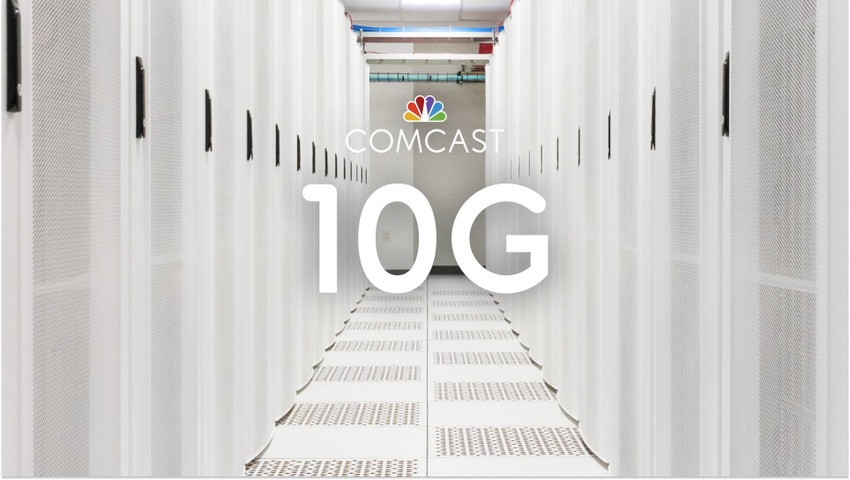Comcast begrudgingly agrees to modify use of '10G' to describe network
Following an appeals process, Comcast said it will adjust its '10G' advertising to comply with an ad watchdog's recommendations, but it 'strongly disagrees' with the analysis.

Comcast has reluctantly agreed to modify the use of "10G" in advertising that describes the operator's broadband network after an ad watchdog agreed with an earlier recommendation that Comcast should alter its approach.
A panel of the National Advertising Review Board (NARB), the appellate advertising body of BBB National Programs, recommended this week that Comcast discontinue its use of the term 10G in the product service name "Xfinity 10G Network" and when 10G "is used descriptively to describe the Xfinity network."
Comcast has been using the 10G branding in TV, digital and print ads and promotional materials amid its rollout of DOCSIS 4.0, an upgrade that enables symmetrical multi-gigabit speeds on its widely deployed hybrid fiber/coax (HFC) network, along with some targeted fiber-to-the-premises (FTTP) deployments largely targeted to new, greenfield buildouts. Comcast's DOCSIS 4.0 offering, branded as "X-Class Internet," currently tops out at 2 Gbit/s, with the potential to deliver more. Comcast's FTTP-based Gigabit Pro service can deliver speeds up to 10 Gbit/s.

Comcast has been using '10G' branding to describe its network. (Source: Screengrab from www.xfinity.com/10g taken February 1, 2024)
Comcast had appealed an earlier decision by the National Advertising Division (NAD) on the 10G matter, which stemmed from challenges raised by Verizon and T-Mobile. NAD had urged Comcast to drop or alter its 10G ads in a way that makes clear Comcast "is implementing improvements that will enable it to achieve 10G and that 10G is aspirational or use '10G' in a manner that is not false or misleading."
NAD said it concluded that Comcast's use of 10G to describe its entire network is an "express claim." Comcast's 10G claim, the organization explained, conveys a message that all consumers on the network can get speeds up to 10 Gbit/s. But such a claim is not substantiated, NAD argued, given that such speeds are currently available to residential customers only on Comcast's fiber-based Gigabit Pro service.
NARB agrees with NAD
In a decision that upheld NAD's original recommendation, the NARB panel concluded that "10G expressly communicates at a minimum that users of the Xfinity network will experience significantly faster speeds than are available on 5G networks." The panel also held that the express claim is "not supported because the record does not contain any data comparing speeds experienced by Xfinity network users with speeds experienced by subscribers to 5G networks."
The NARB panel also found that the availability of 10-Gig speeds through Comcast's Gigabit Pro service tier "does not support the superior speed claim (or a 10Gbps claim) for the Xfinity network as a whole."
In response, Comcast said it will comply with the panel recommendations, but that it "strongly disagrees with NARB's analysis and approach."
'10G' extends beyond Comcast
The original NAD decision and the more recent one from the NARB panel could have wider ramifications for the cable industry.
NCTA–The Internet & Television Association, CableLabs and their cable operator members launched the industry's "10G" campaign and branding mark at CES 2019 in Las Vegas, signaling its shift toward multi-gigabit speeds, enhanced security and lower latencies across multiple access networks – HFC, FTTP and even wireless.
CableLabs recently highlighted a few milestones to commemorate the fifth anniversary of the industry's 10G initiative at CES 2024.
Other operators, including Mediacom Communications, are using "10G" branding.
About the Author(s)
You May Also Like











